Late 2018 sees the launch of the 2019-spec Mitsubishi Outlander. A quiet achiever in the SUV segment, the Outlander seems to have a reasonable following – the fact that all models (except the PHEV hybrid) are seven seaters surely helps sales along – especially at the price points each model targets.
In what turned out to be a ‘perfect storm’ scenario, but in a good way, we managed to score a base model LS with the 2.4-litre petrol engine for a drive from Wellington to Auckland and return, then switched that for the top-spec VRX diesel, then switched from that to the plug-in PHEV hybrid. Another article will be coming on how that worked out.
Can slight changes – and cosmetically, very light – help keep the Outlander fresh and in buyers’ minds? Especially with new models receiving so much attention, like the 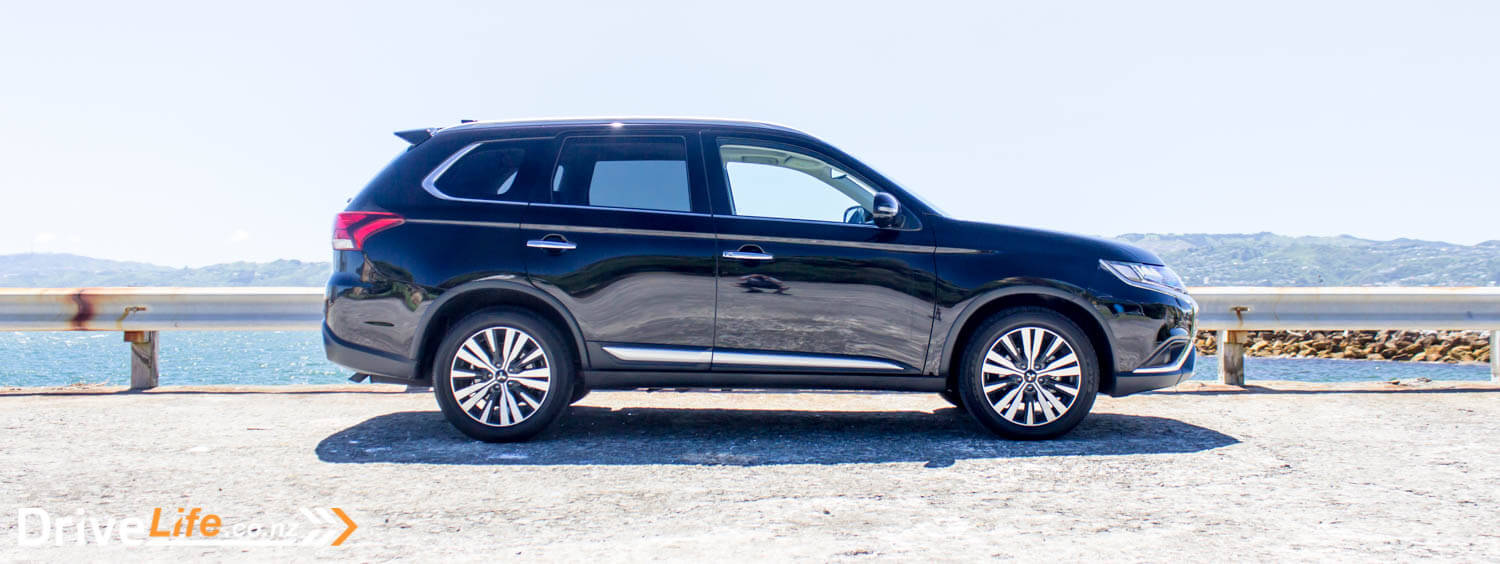 seven-seat only Santa Fe.
seven-seat only Santa Fe.
What’s In The 2019 Mitsubishi Outlander VRX Diesel Range?
There’s three models to pick from in the Outlander petrol/diesel range, with the two larger motors having an AWD option. All Outlander petrol and diesel models are seven seaters.
The base model is the 2.0-litre, four-cylinder petrol driven LS version. This comes with a CVT transmission and retails at $39,990. The engine in this model puts out 112kW of power and a reasonable 193Nm of torque, with a rated fuel consumption figure of 6.8l/100km. Feature-wise, it’s not too bad, with an alarm/engine immobiliser, ISO-FIX mountings on the second row of seats and 3 tether anchors.
There’s also keyless entry, 2xUSB ports, rear parking sensors, Apple CarPlay and Android Auto capability, and a 6-speaker audio system with Bluetooth. The 2.4 LS model has the same specs, but this engine puts out 126kW of power and 224Nm of torque, for $41,990, and uses fuel at 7.2l/100km. This model is also available in AWD for $43,990.
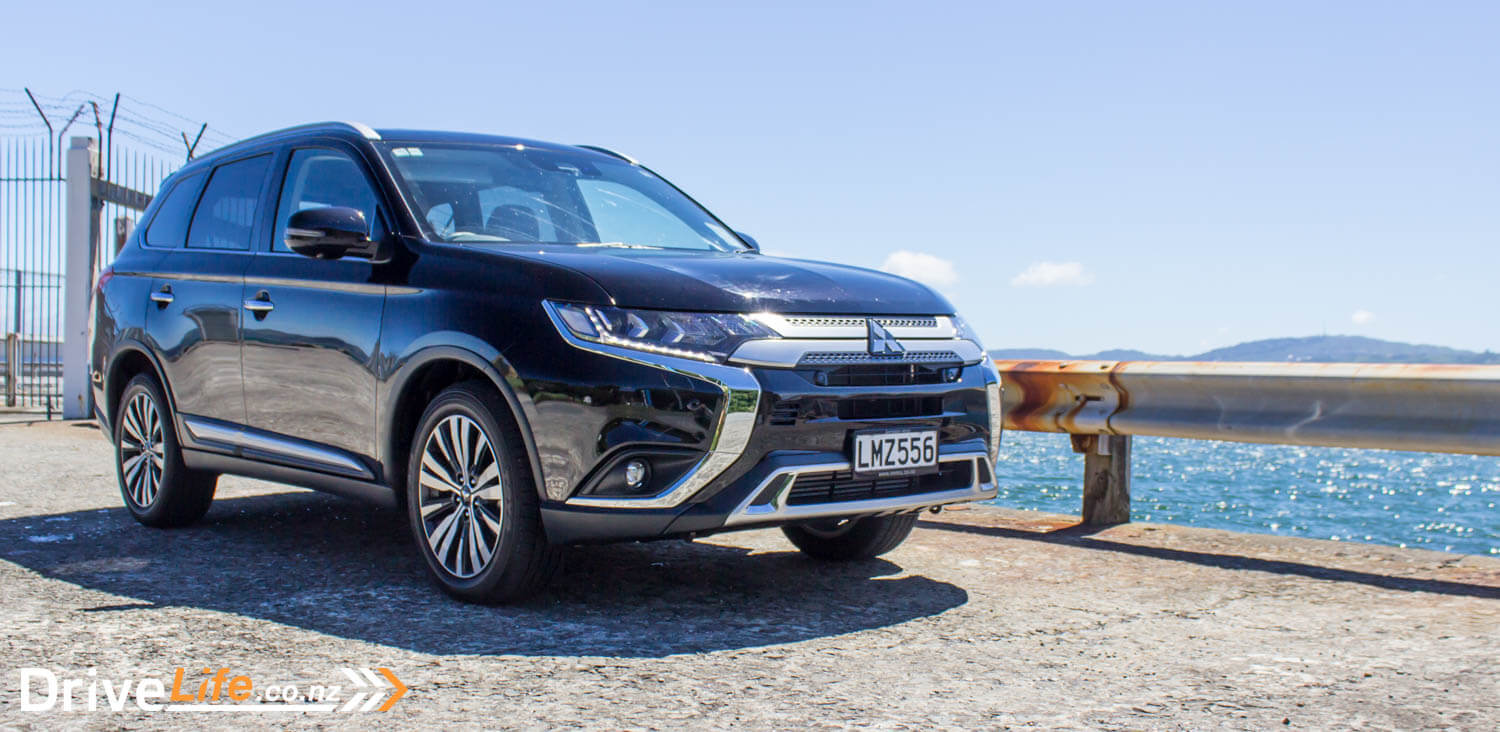
Note that in the 2WD LS range of Outlanders, there’s a special running (which has been going for a while now) for the 2.0-litre at $32,990, and the 2.4-litre for $33,990. This represents what has to be the bargain of the year, for a solid seven-seat SUV.
Next up is the XLS model, with the 2.0-litre engine ($44,490) 2.4-litre AWD (47,490), or the diesel 2.3-litre ($49,990). The diesel motor gives you 112kW of power and a good 366Nm of torque and fuel consumption is rated at 6.2l/100km. All diesel Outlanders dump the CVT for a ‘real’ 6-speed automatic gearbox, with Sports mode.
The CTV in XLS petrol models comes with a Sport mode too, and you also gain paddle shifters, adaptive cruise control, forward collision mitigation with pedestrian detection, lane departure warning, blind spot monitoring, rear cross traffic alert, front fog lamps, heated and electrically folding exterior mirrors, keyless start, automatic wipers, automatic high beams, automatic headlights, and an auto dimming interior mirror. That’s a lot more kit for the money over the base LS models.
Last up is the top-spec VRX, which we tested. This too is available with either the 2.4-litre petrol motor ($54,490) or diesel ($56,990). On top of the XLS specs, the VRX adds front parking sensors, Multi Around View camera system (360-degree camera), LED headlamps with auto levelling, LED fog lamps, chrome door handles and window belt line moulding, leather seating (first and second row), heated and electric front seats, headlamp washers, and an electric tailgate.
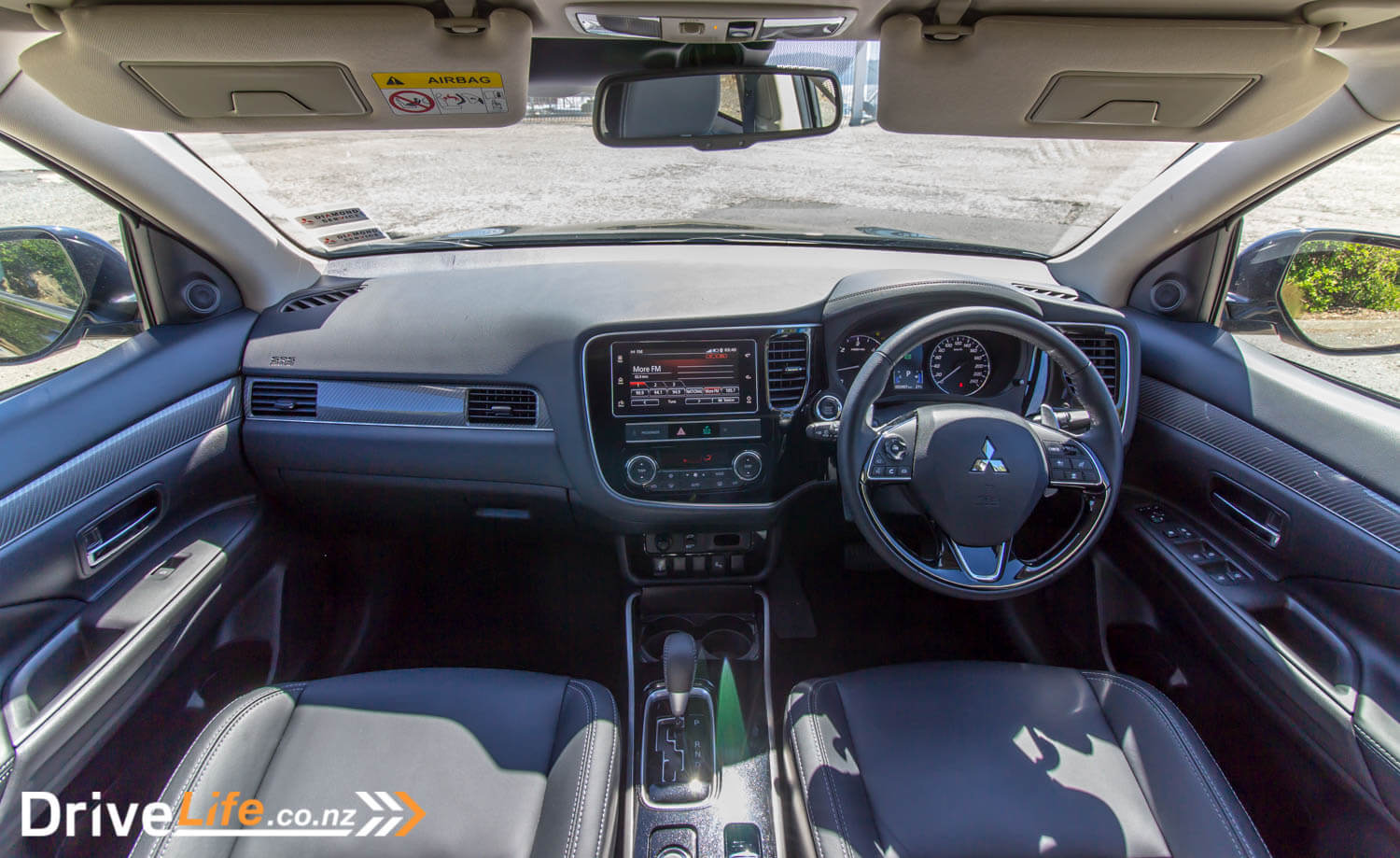
There’s seven colours available for the Outlander range, Cardrona (white), Sterling Silver, Titanium, Amethyst Black, Rose Red, Iron Bark, and Atlantic Blue, which is a new colour.
You can read more about the Outlander range on Mitsubishi New Zealand’s website.
First Impressions Of The 2019 Mitsubishi Outlander VRX diesel
Hands up who doesn’t like black and chrome? Yeah, not many at all. Our test car was finished in Amethyst Black, and looked classy. The Outlander isn’t anything mind blowing design-wise, but it’s nicely proportioned and even has its own identity, if looking a little too similar to the Eclipse at the front.
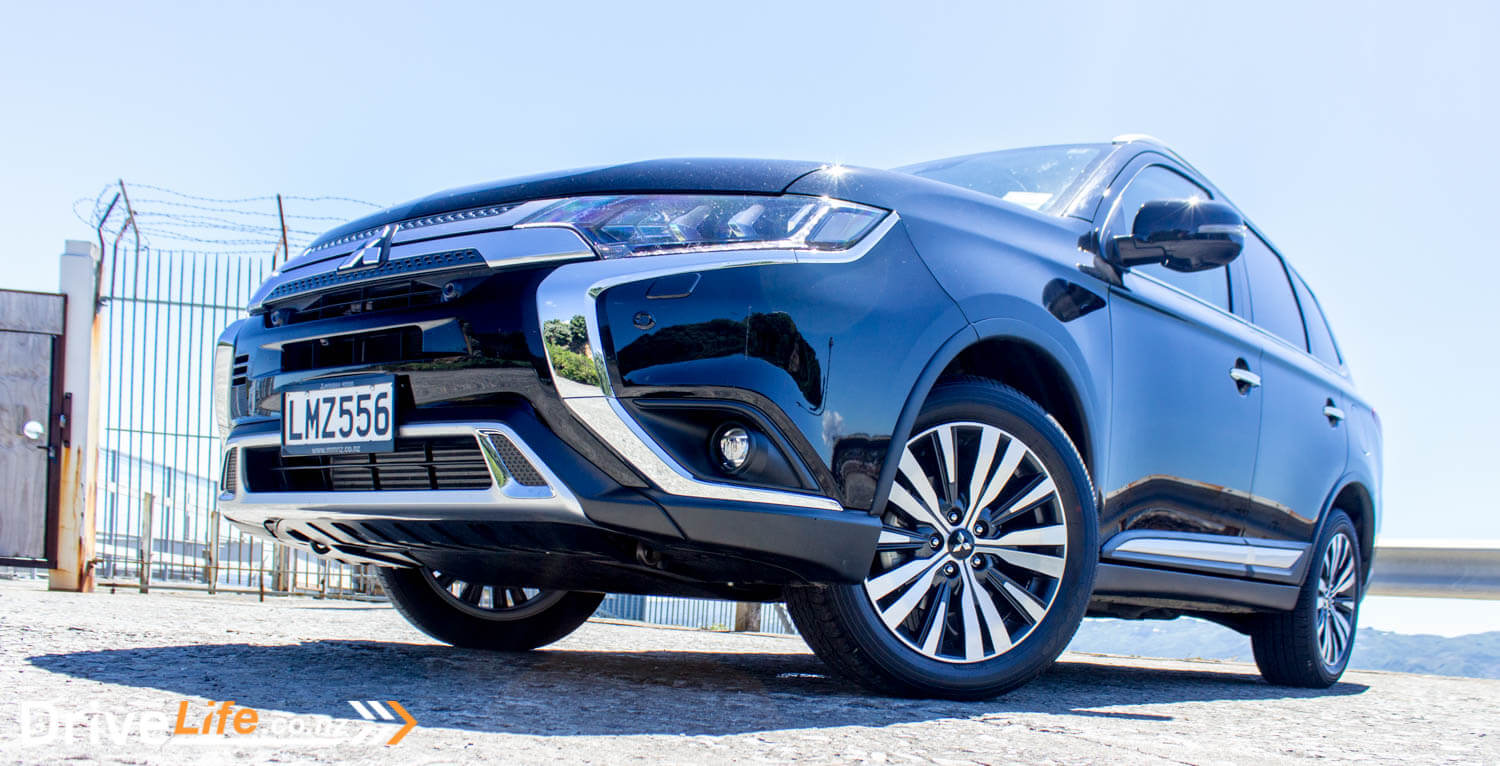
Speaking of the front, it’s a little too busy for me – too many angles and shapes, but overall the Outlander is a non-offensive design that’s a pleasure to see in the parking lot.
You’d have to be a real Mitsubishi enthusiast to pick out the differences between the 2018 and 2019 model years – very small changes are made to the front and rear of the car, with no changes to the side.
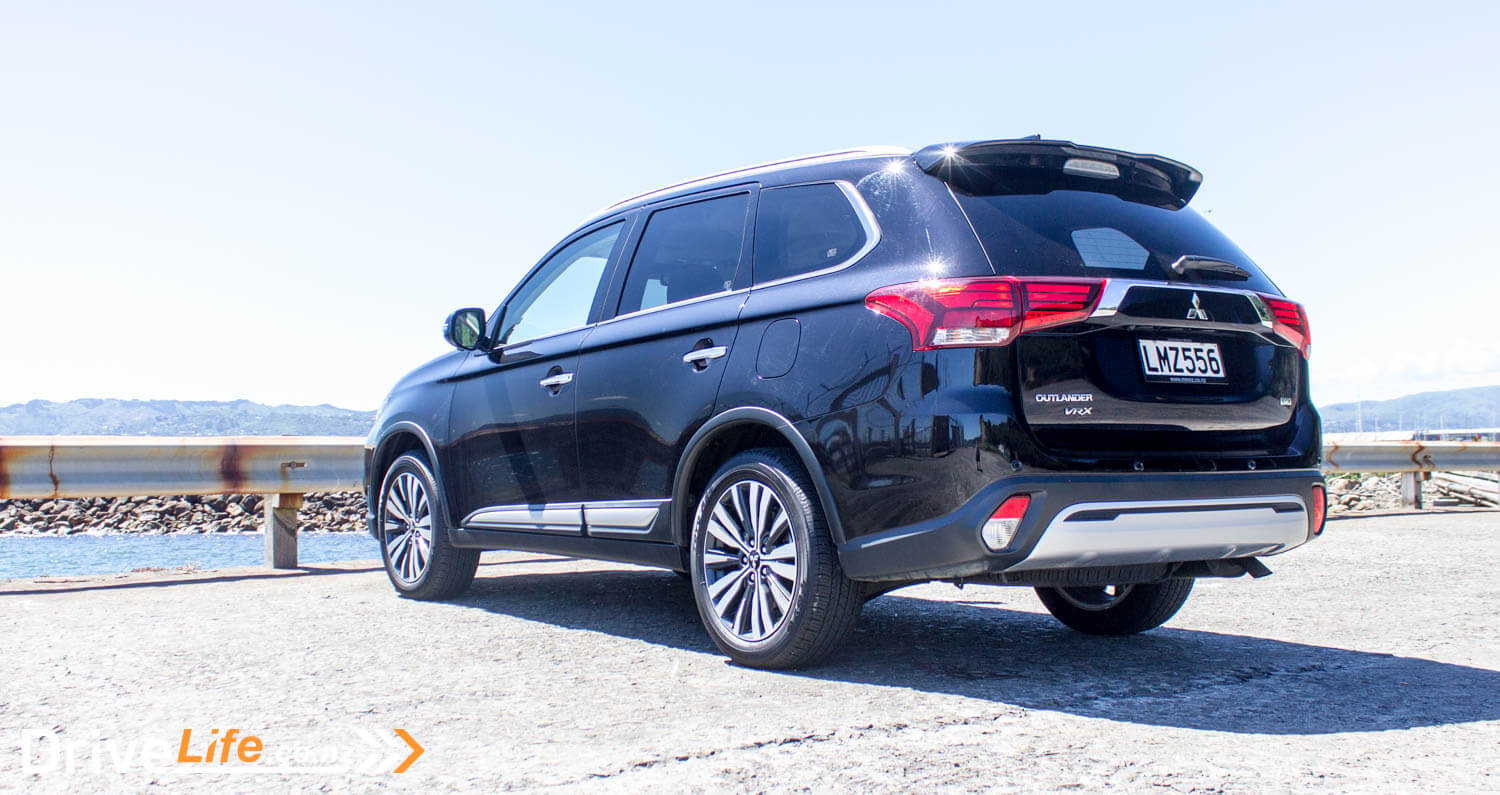
What’s The Inside Like On A 2019 Mitsubishi Outlander VRX Diesel?
There’s not too many changes on the inside either in this latest model, and that’s not a bad thing. The interior of the Outlander is well laid out, with most things falling to hand nicely.
An electric park brake (with auto hold) is now standard across the range, and there’s more side support in the front seats. There’s a few other small trim changes too.
Our VRX test car had black leather with white stitching, which looked great. The headlining and pillars were finished in a beige cloth which normally lightens things up some, but even with deep side windows and a tilt/slide sunroof, for some reason it still felt a little dark inside.
There’s some fake carbon fibre finishing (‘carbon effect’) on the doors and dash, and it looks ok, and I guess adds a touch of sportiness to the VRX model.
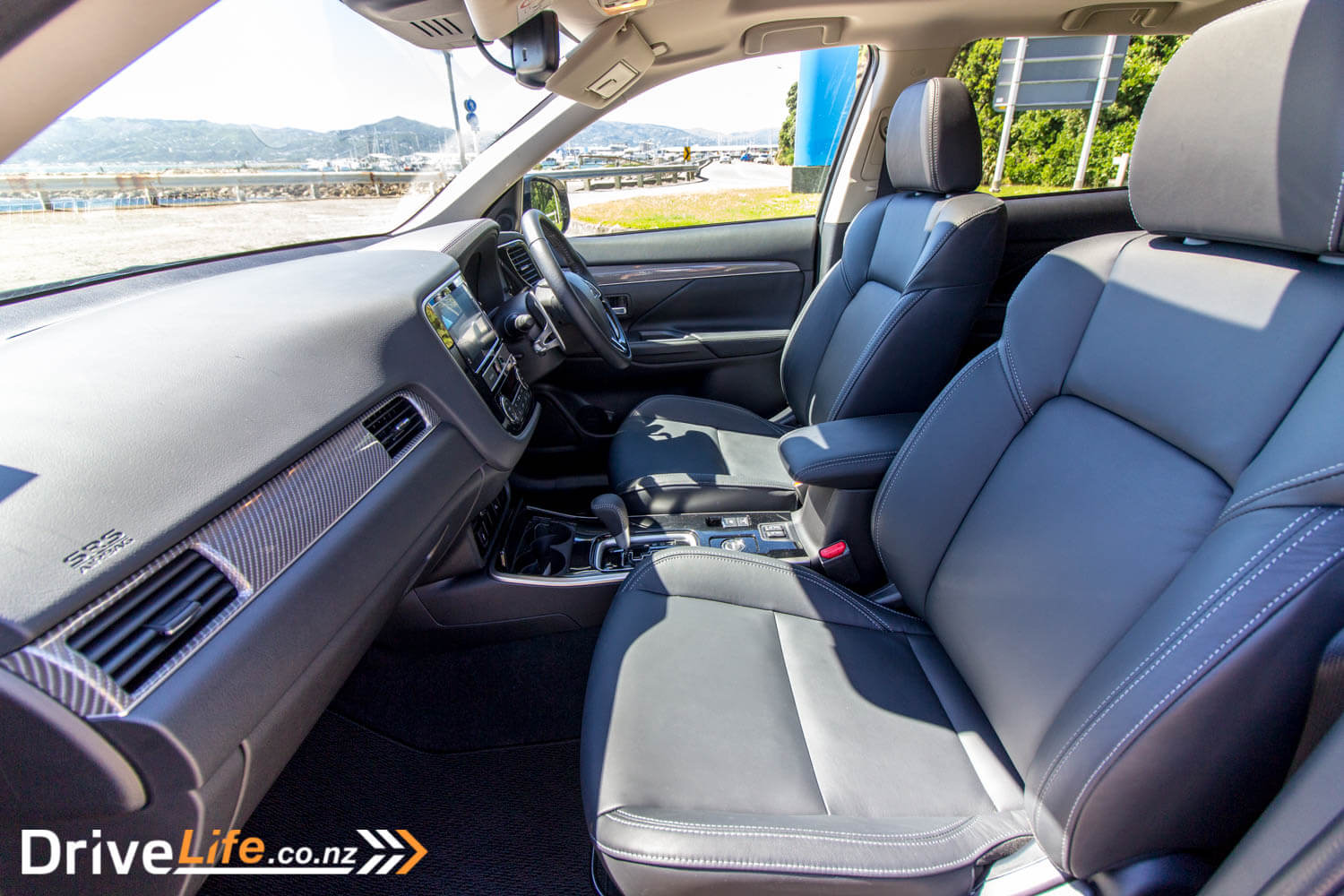
It was a shame to see the heated seat buttons are the same as in the Eclipse – lifted straight from a 1990s parts bin. There’s some nicely modern-looking buttons for the electric park brake and brake auto-hold, then behind those are two old-school seat heater rocker buttons. Come on Mitsubishi, you can do better than this.
This may be a top-spec model but there are a few things missing that we are used to seeing these days, like Qi wireless phone charging and a heads-up display – the VRX doesn’t have these. I counted 5 blank switch plates in the VRX – that’s quite a few for a top-spec model. But let’s be honest, at the price of $57K it’s still great value.
Up on the roof is the already-mentioned tilt/slide electric sunroof, with a manual blind to keep out that pesky sun on hot days.
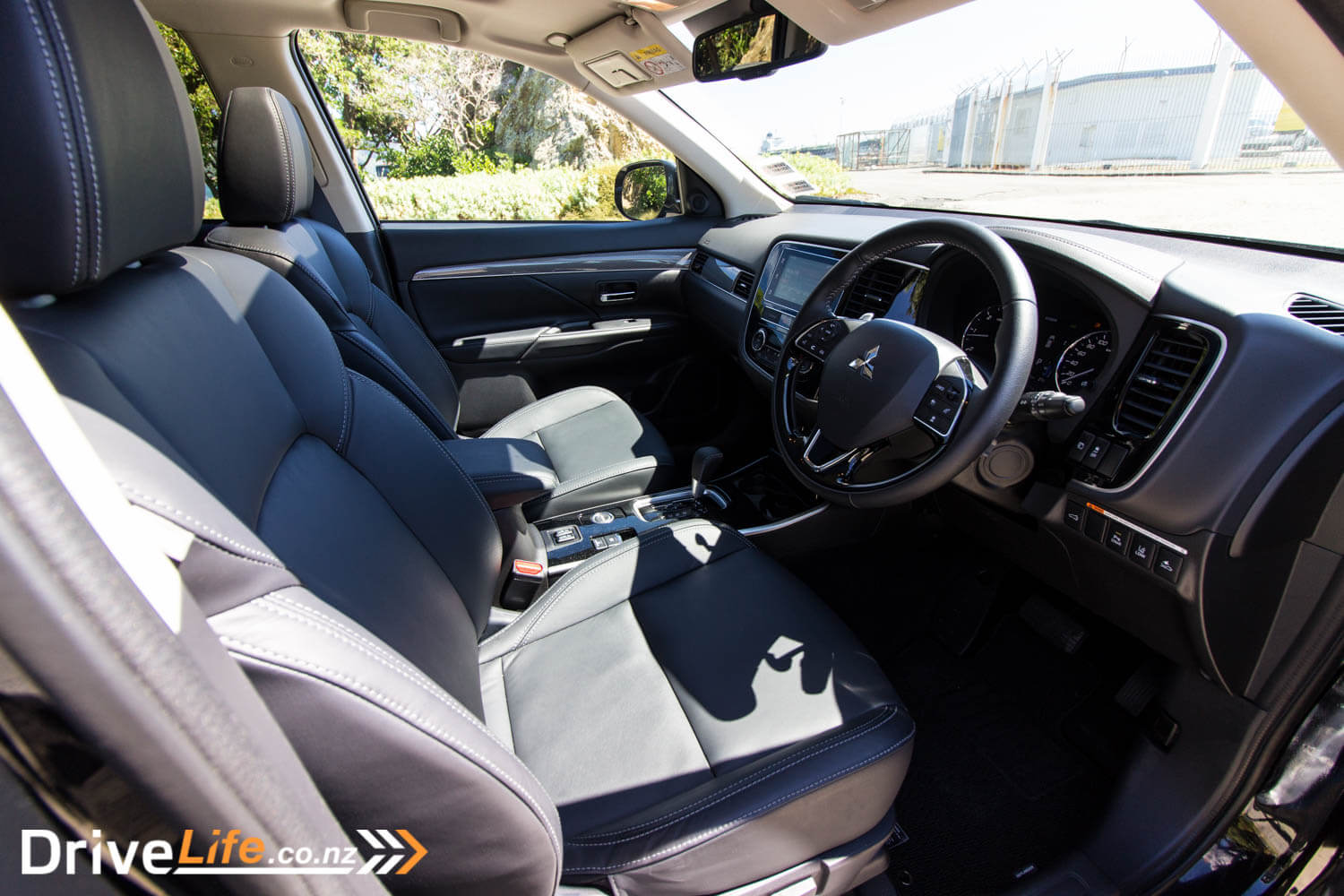
Moving to the back seat, there’s some vents on the centre console for your rear passengers, which will win friends. There’s plenty of leg room back there too, and cargo space is above average for the class.
Since all Outlanders (except the PHEV version) are seven seaters, it’s worth mentioning that third row. It’s definitely a sometimes-use third row – legroom is a little tight back there. Access to it is a little tight too – the doors don’t seem to open quite wide enough to allow easy access to those last two seats. Still, having a seven seater is always a great thing, just ask anyone who’s got one.
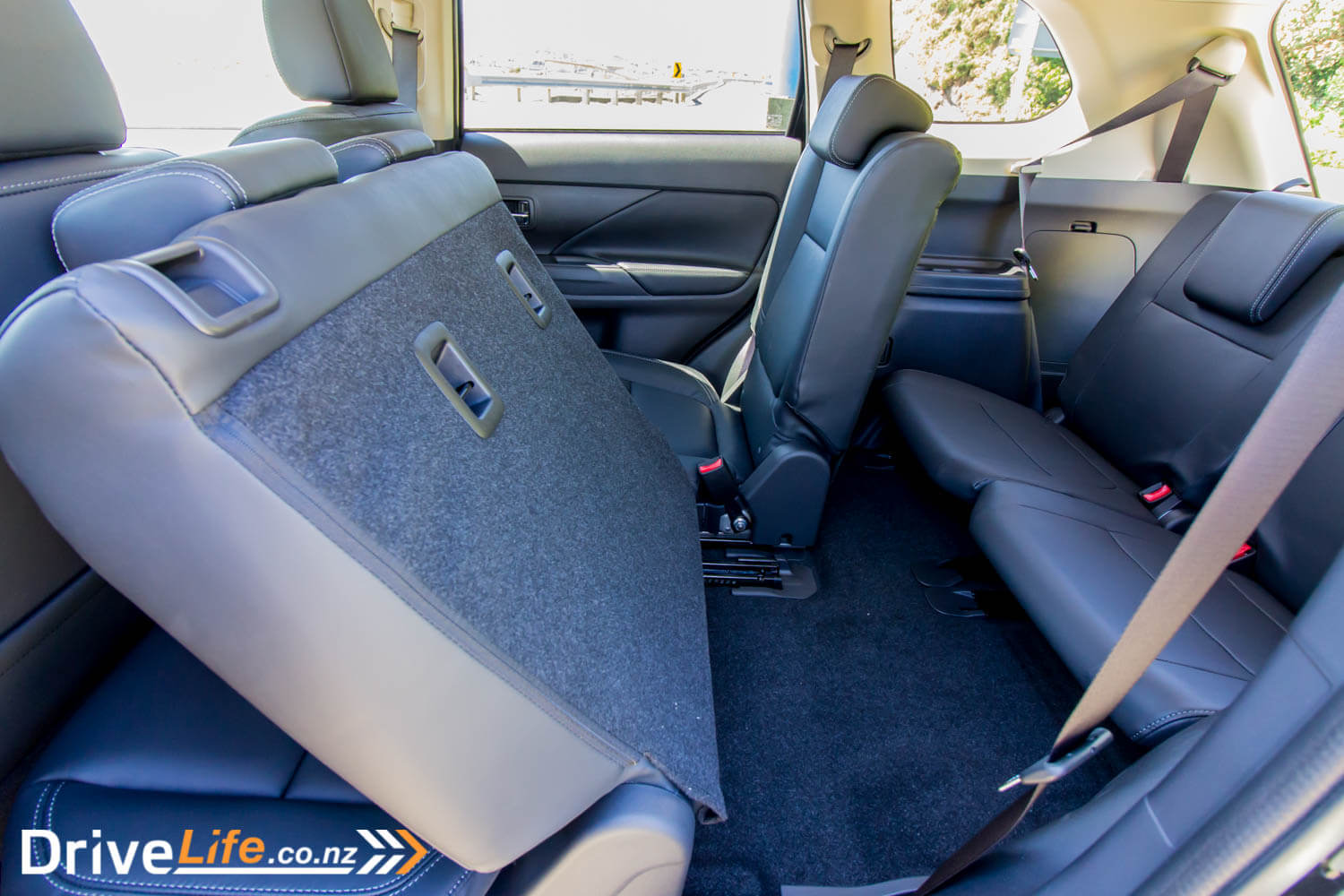
One thing I found when dropping the second row of seats for the photos is that the seat base has to be flicked forward first before dropping the second row backrest down. I have to admit, I resorted to the manual for this process as I couldn’t work it out. Once I read it I clicked, but it felt more complicated than it needed to be. Other seven-seaters don’t do it this way.
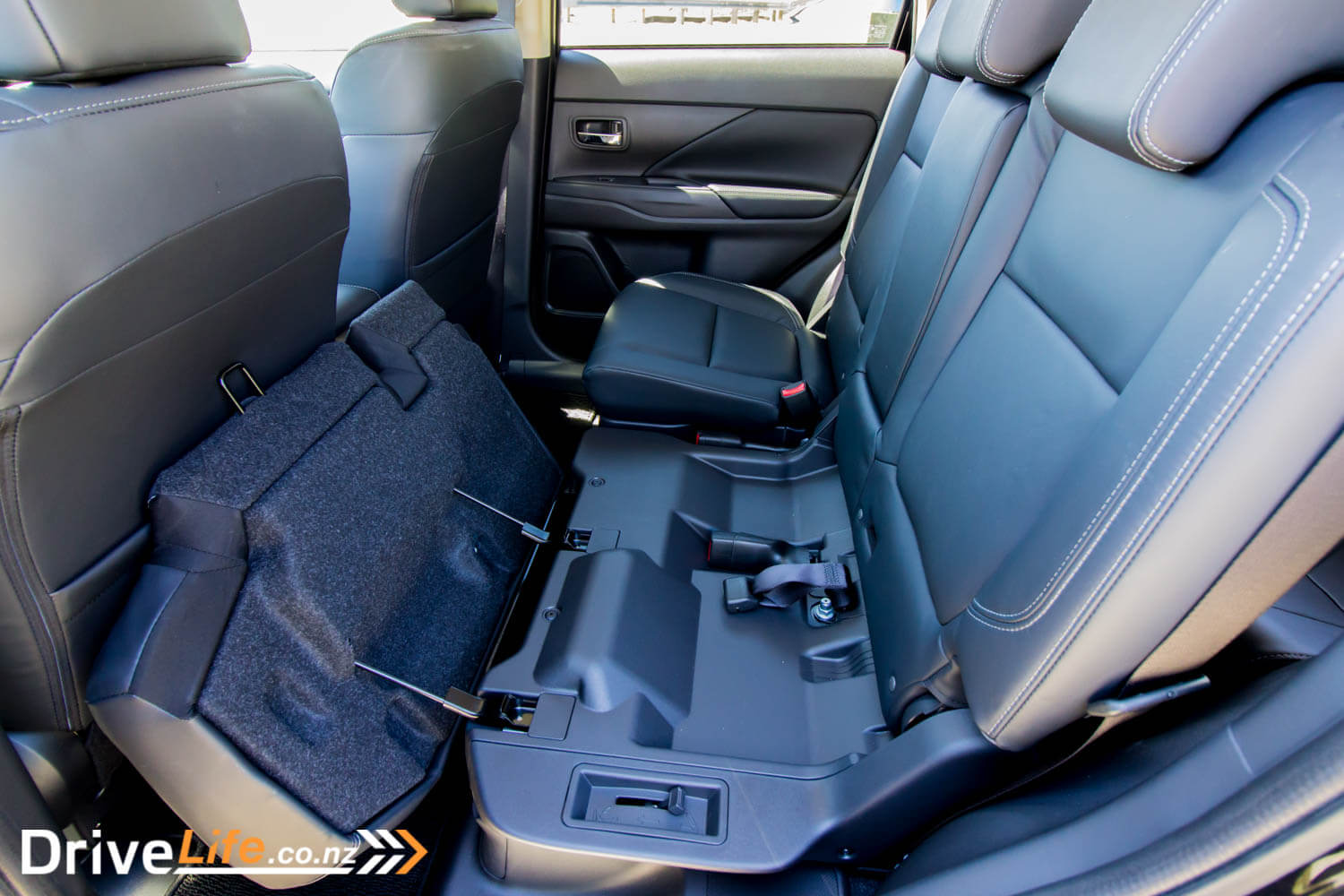
It’s nice to see a full-size spare wheel under the floor in the rear – this is something of a rarity these days.
What Does The 2019 Mitsubishi Outlander VRX Diesel Drive Like?
In less than thirty seconds my Bluetooth had connected – excellent.
Then I went to start the car. Something you need to know is that you have to hold the Start button down for three seconds or so before it will actually start. It mainly seems to do this when it’s cold, and this wasn’t limited to the diesel version either.
The whole Outlander experience – diesel or petrol – is pretty quiet; not too much road or wind noise, not much engine noise unless it’s at low speeds or idle in the diesel. This was something I took away from driving the base-spec petrol version. I was surprised just how quiet that bargain-priced seven-seat SUV was.
The ride is good too, although for some reason the VRX felt firmer than the XLS version, even though they ride on the same size 18” alloy wheels. This 2019 model has front and rear suspension revisions, for better ride comfort and stability improvements. After covering 1,600km in the petrol model and another 500km in the VRX diesel, I had no real complaints about the ride other than it can get a bit jittery over smaller bumps.
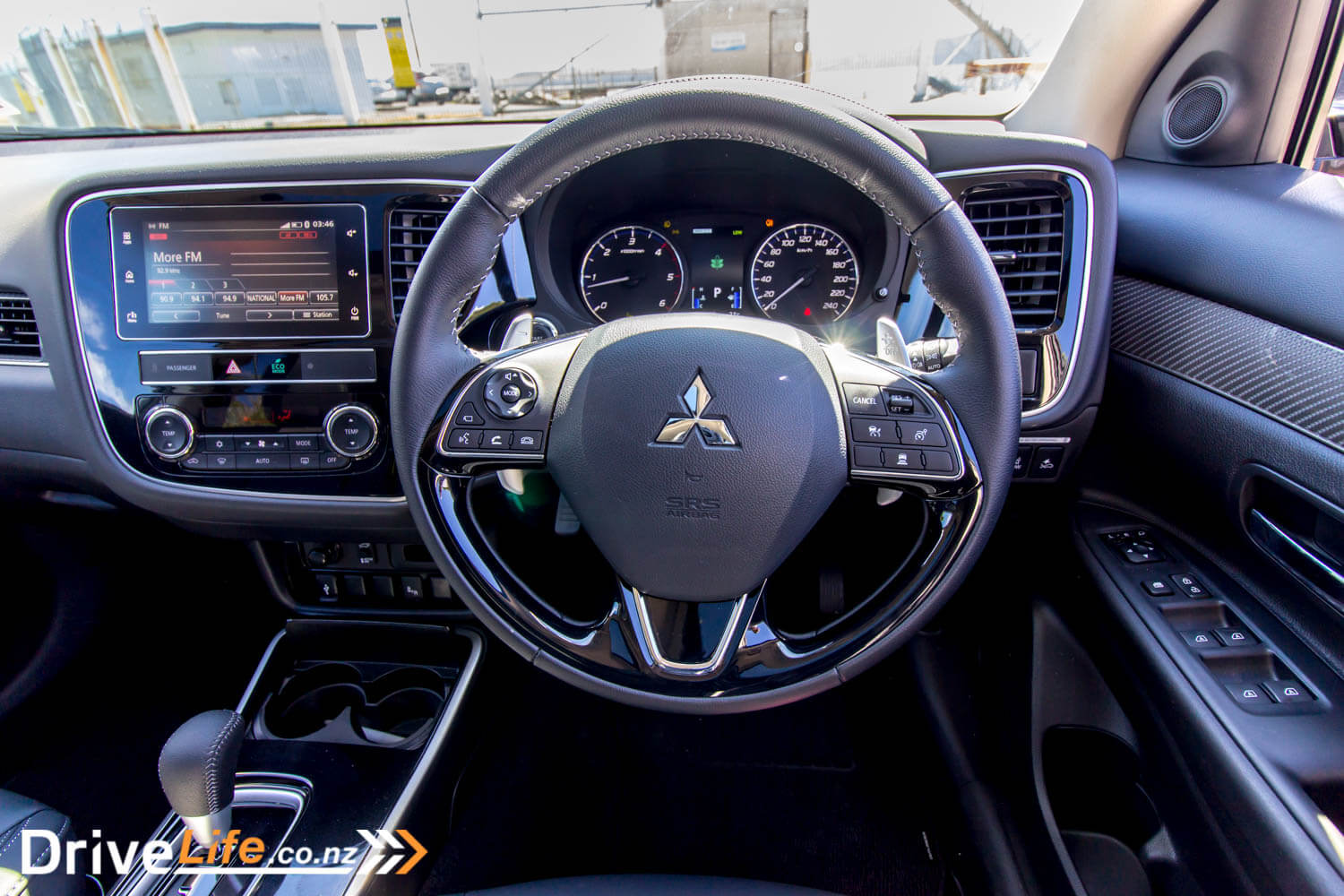
Apparently steering responsiveness has been improved too, and the body rigidity has increased. Another surprise for me – the steering feel is very good in the Outlander. I fair chucked the base petrol model around corners on the back roads from Turangi to Kihikihi, and there was nothing but great steering feel coming through.
In fact, the overall handling of the Outlander is bordering on excellent; it all comes together – steering, handling, brakes. Sure, there’s some body roll, but the grip is there and this car can actually give you confidence that you have it all under control. This was my biggest takeaway of the whole 3-model Outlander experience.
One thing I liked of the diesel over the petrol model is the 6-speed automatic transmission. The petrol versions do with a CVT that has a 6-speed stepped mode, and it isn’t bad, but the standard 6-speed auto in the diesel felt just that much better.
Performance-wise, with 366Nm of torque, acceleration is very good. It isn’t quite up there with some other new-generation diesels which are pumping out 400Nm or more, but good enough for the day-to-day and for towing as well. Interestingly, I found the diesel gave its all in the mid to upper parts of the rev range, rather than all at the bottom end, where we see most diesels perform the best. This isn’t a negative on the VRX diesel, just something a little different. The specs say max torque is realised between 1500 and 2750rpm, but it doesn’t feel that way driving it.
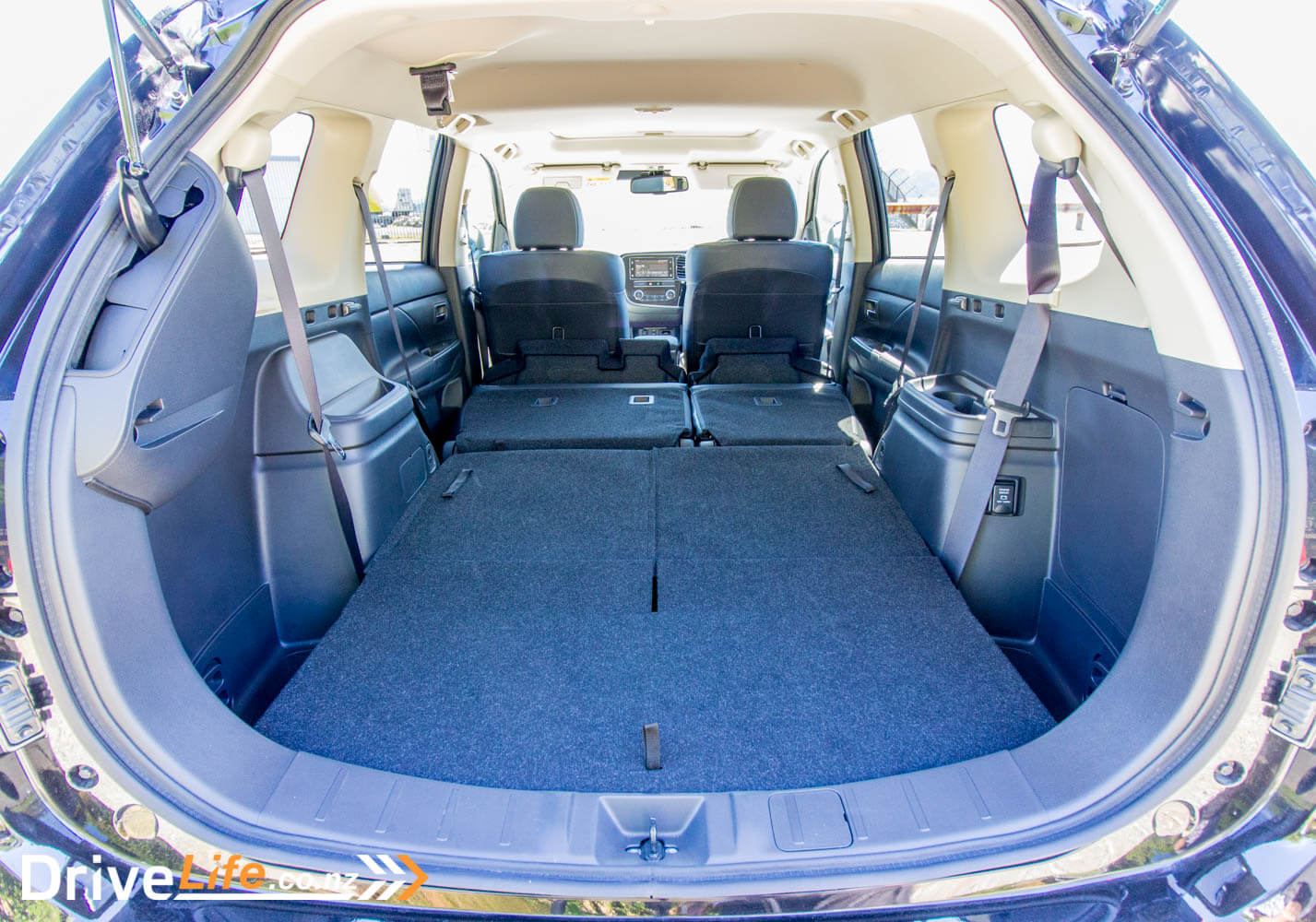
For that daily drive, the Outlander VRX shines. The turning circle feel very tight, but the specs say it’s 11.0 metres, which is very much medium for this class of SUV. Visibility is excellent, bar a rather chunky C pillar, but blind spot monitoring, big side windows and the 360-degree camera system mean you have the best shot at keeping safe.
I did have a few things that didn’t seem well thought out, for me anyway. For example, the VRX has an electric tailgate – great. You can open and close it from the key fob, from the driver’s seat, but not from the tailgate itself. Well, you sort of can. By default, you can’t open the electric tailgate from the button on the tailgate door. If you want this to work (and why wouldn’t you) then you need to get it reprogrammed at a Mitsubishi workshop. I don’t understand why the default isn’t to have it enabled.
When chatting on the phone in the car using Bluetooth, the speaker’s voice only came out the passenger’s door speaker – not the driver’s door speaker. This meant I both cranked the volume right up and leant over to the left to be able to hear the caller. Some of my passengers thought I was making a pass at them (I wasn’t). This was worst on the motorway though, it was better around town. If the Outlander was European, I’d put it down to a left-hand drive to right-hand drive issue, but the Outlander is from Japan, so not sure what’s up with that. It did this on the petrol version too, and in the PHEV, so it wasn’t a one-off in the VRX.
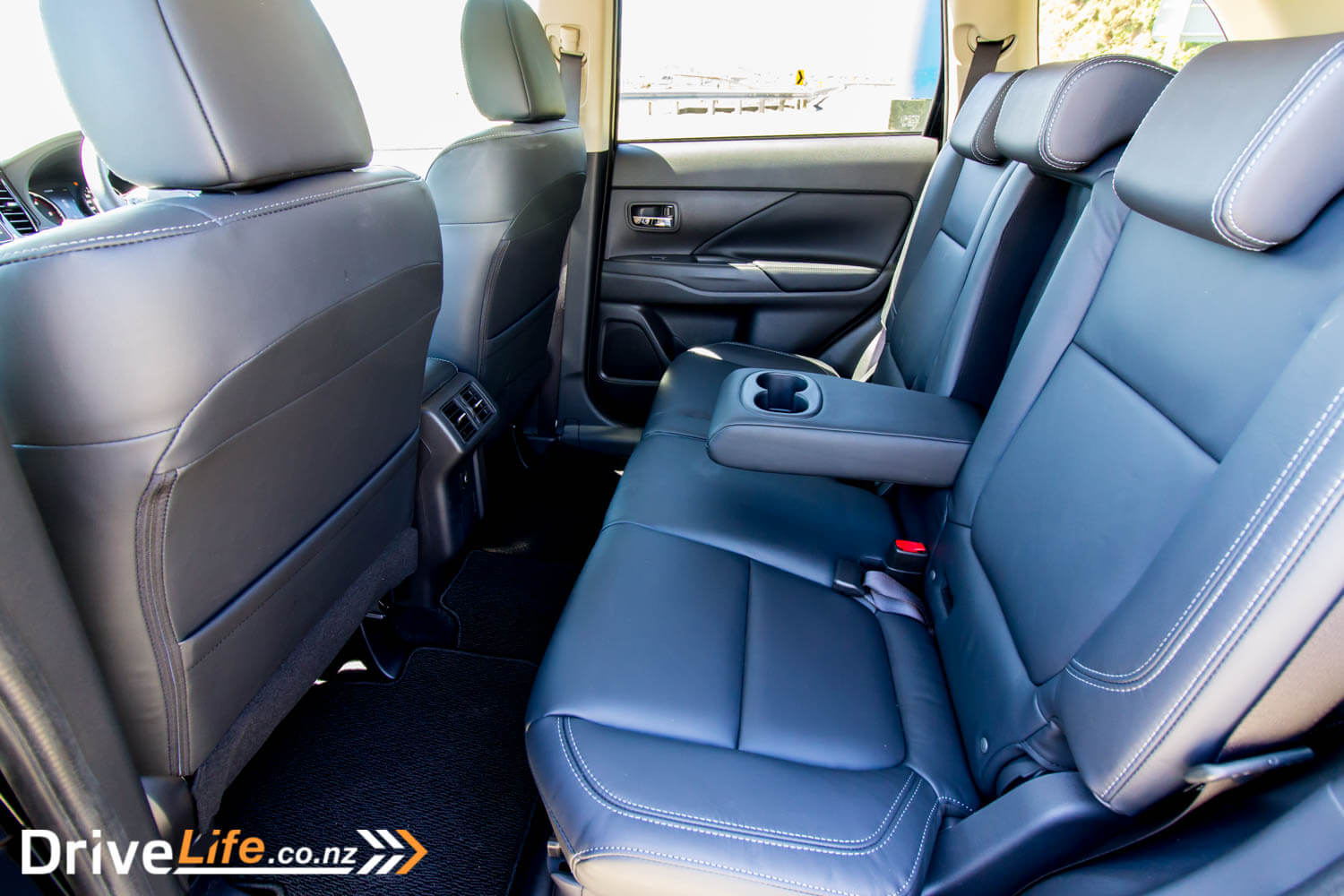
The seats overall are pretty comfortable, but after jumping straight from the base model with cloth seats into the VRX, they felt a lot firmer. I got used to them over the week, but I’d prefer the comfort of the base model’s seats.
Audio quality was very good, if above average, but (that word again) more often than not when I got back into the car and it reconnected to my phone’s Bluetooth, it would change my play setting to shuffle. I don’t like shuffle; I just want to play my songs in the list in order, thanks very much. It did this 75% of the time, and was a little annoying. The same thing happened in the petrol and PHEV models.
In saying that, the whole infotainment system works well, and simply. There’s not much more to say, it’s a piece of cake to use, and the touchscreen is clear and crisp.
A couple more tweaks for Mitsubishi to make. We almost despise Subaru’s adaptive cruise control that beeps when a car moves into or out of your lane on the motorway – pointless and annoying. Sigh; the Outlander does it too – most of the time. Sometimes it didn’t, but when it did I wanted to throttle it.
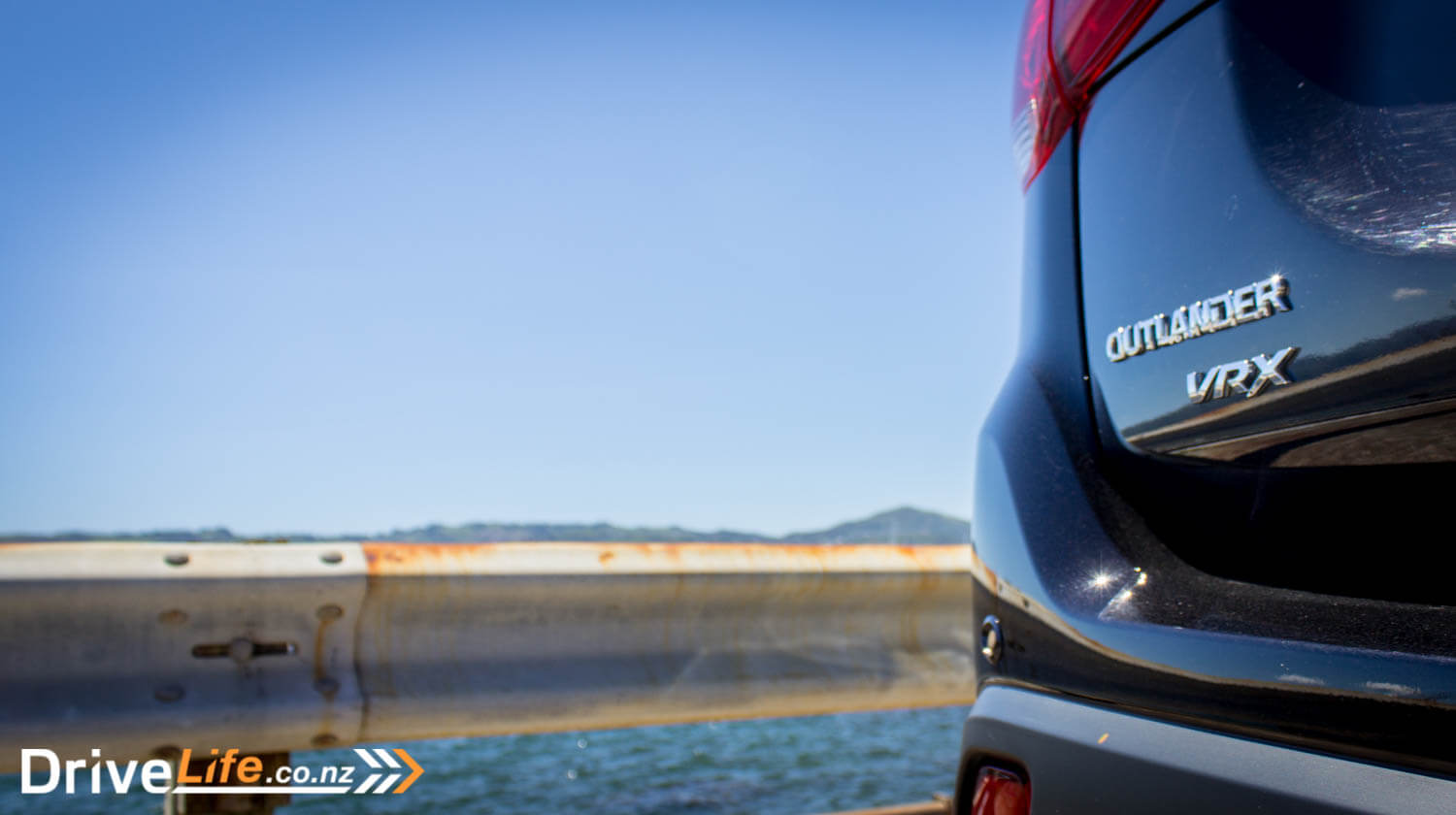
Another bug fix please for the next software update. We use the trip meter to find out fuel consumption. It’s all pretty simple – we pick up a car, reset the A trip meter, and then check the fuel consumption when we hand it back. But, the Outlander resets the fuel consumption to zero when the key is turned off for four hours of more. Argh! However, you can troll through the menus in the infotainment system, and turn off the ‘auto reset’ function. Fixed! Well, you would think so. Each time you turn off the Auto Reset function, it turns itself back on again when you restart the car. No idea why Mitsubishi feels the need to do this.
In the end I had to make an educated guess on how much fuel I used over the week and 500km, which was 8.1litres/100km.
Last niggle – there’s no digital speedo. I rely on this to make sure I am not going over the speed limit (since we all know that’s all it takes to drive safely, right?). It takes too long and too much brain power to look down at the speedo every ten seconds to check your speed, so a digital speedo is almost a must these days.
That’s a bit of a list, I know. But they aren’t majors and honestly, I could see myself jumping into an Outlander – any version – for the Daily Drive quite easily.
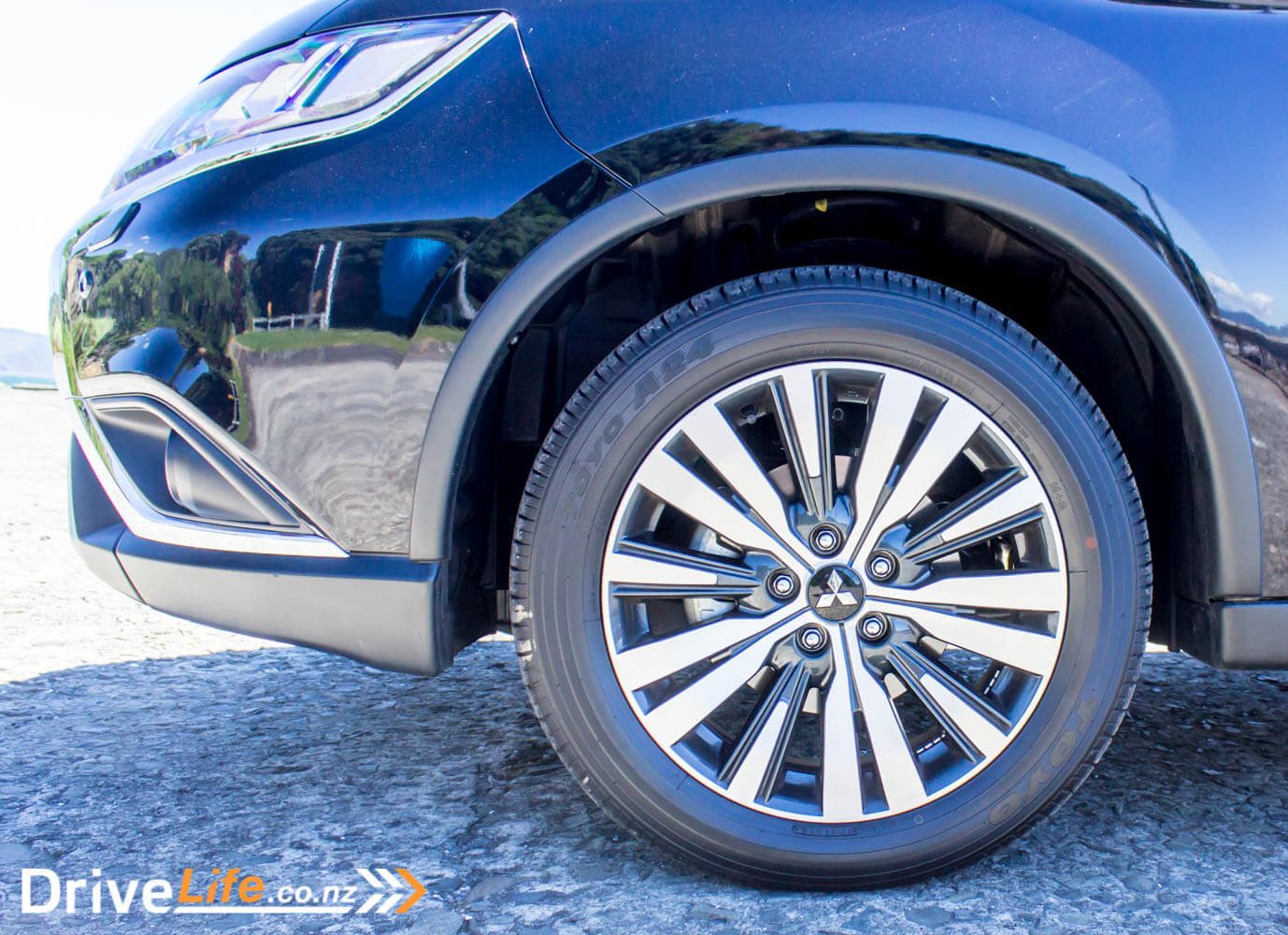
What’s The Competition For The 2019 Mitsubishi Outlander VRX diesel?
| Brand/Model | Engine | Power/ Torque kW/Nm |
Towing capacity, unbraked/braked (Kg) |
Seats | Cargo capacity, litres | Fuel L/100km | Price |
| Hyundai Santa Fe Limited AWD | 2.2-litre, 4-cylinder turbo-diesel | 147/440 | 750/2000 | 7 | 547 | 7.5 | $82,990 |
| Volkswagen Tiguan Allspace TSI-R-Line AWD | 2.0-litre, 4-cylinder turbo-petrol | 162/350 | 750/2500 | 7 | 700 | 8.1 | $72,990 |
| Nissan Pathfinder Ti AWD | 3.5-litre V6 petrol | 202/340 | 750/2700 | 7 | 1354 | 10.1 | $69,990 |
| Skoda Kodiaq TDI Sportline AWD | 2.0-litre, 4-cylinder turbo-diesel | 140/400 | NA/2000 | 7 | 630 | 5.7 | $67,990 |
| Ssangyong Rexton SPR AWD | 2.2-litre, 4-cylinder turbo-diesel | 133/420 | 750/3500 | 7 | N/A | 8.3 | $67,990 |
| Isuzu MU-X AWD | 3.0-litre, 4-cylinder turbo-diesel | 130/430 | 750/3000 | 7 | N/A | 7.9 | $65,990 |
| Holden Trailblazer LTZ AWD | 2.8-litre, 4-cylinder turbo-diesel | 147/500 | 750/3000 | 7 | 878 | 8.6 | $62,990 |
| Mazda CX-8 Limited AWD | 2.2-litre, 4-cylinder turbo-diesel | 140/450 | 750/2000 | 7 | 775 | 6.0 | $62,495 |
| Toyota Fortuner Limited AWD | 2.8-litre, 4-cylinder turbo-diesel | 130/420 | 750/2800 | 7 | N/A | 8.6 | $58,490 |
| Mitsubishi Outlander VRX (diesel) AWD | 2.3-litre, 4-cylinder turbo-diesel | 112/366 | 750/2000 | 7 | 1048/1845 | 6.1 | $56,990 |
| Haval H9 Ultra AWD | 2.0-litre, 4-cylinder turbo petrol | 180/350 | NA/2500 | 7 | NA | 10.9 | $47,990 |
What’s The Pros And Cons For The 2019 Mitsubishi Outlander VRX diesel?
| Pros | Cons |
|
|
What’s The Verdict On The 2019 Mitsubishi Outlander VRX diesel?
It’s really hard to fault the Outlander. Sure, there’s some niggly things, but for the price? Just compare and see what you get for your money with the Outlander VRX.
A great drive, good equipment levels and low pricing. Mitsubishi should do well with the 2019 Outlander.

2019 Mitsubishi Outlander VRX Diesel rating: 4.0 Chevrons
2019 Mitsubishi Outlander VRX Diesel – Specifications
| Vehicle Type | Medium-size, 5-door SUV |
| Starting Price | $56,990 |
| Price as Tested | $56,990 |
| Engine | 2.3-litre, four-cylinder turbo-diesel |
| Transmission | 6-speed automatic with sports mode |
| Power, Torque | 112kW/366Nm |
| 0-100km/h, seconds | n/a |
| Spare Wheel | Full size alloy |
| Kerb Weight, Kg | 1,640 |
| Length x Width x Height, mm | 4695x1810x1710 |
| Cargo Capacity, litres | 1048/1845 |
| Fuel Economy, L/100km | Advertised Spec – combined – 6.1 Real World Test – combined – 8.1 Low Usage: 0-6 / Medium Usage 6-12 / High Usage 12+ |
| Fuel tank capacity, litres | 60 |
| Towing Capacity Kg, unbraked/braked |
750/2000 |
| Turning circle, metres | 11.0 Small: 6-10m / Medium 10-12m / Large 12m+ |
| Warranty | 10 years/160,000km drivetrain warranty 5 years/130,00km new vehicle warranty 5 years Roadside Assist |
| ANCAP Safety Ratings | 5 Star |
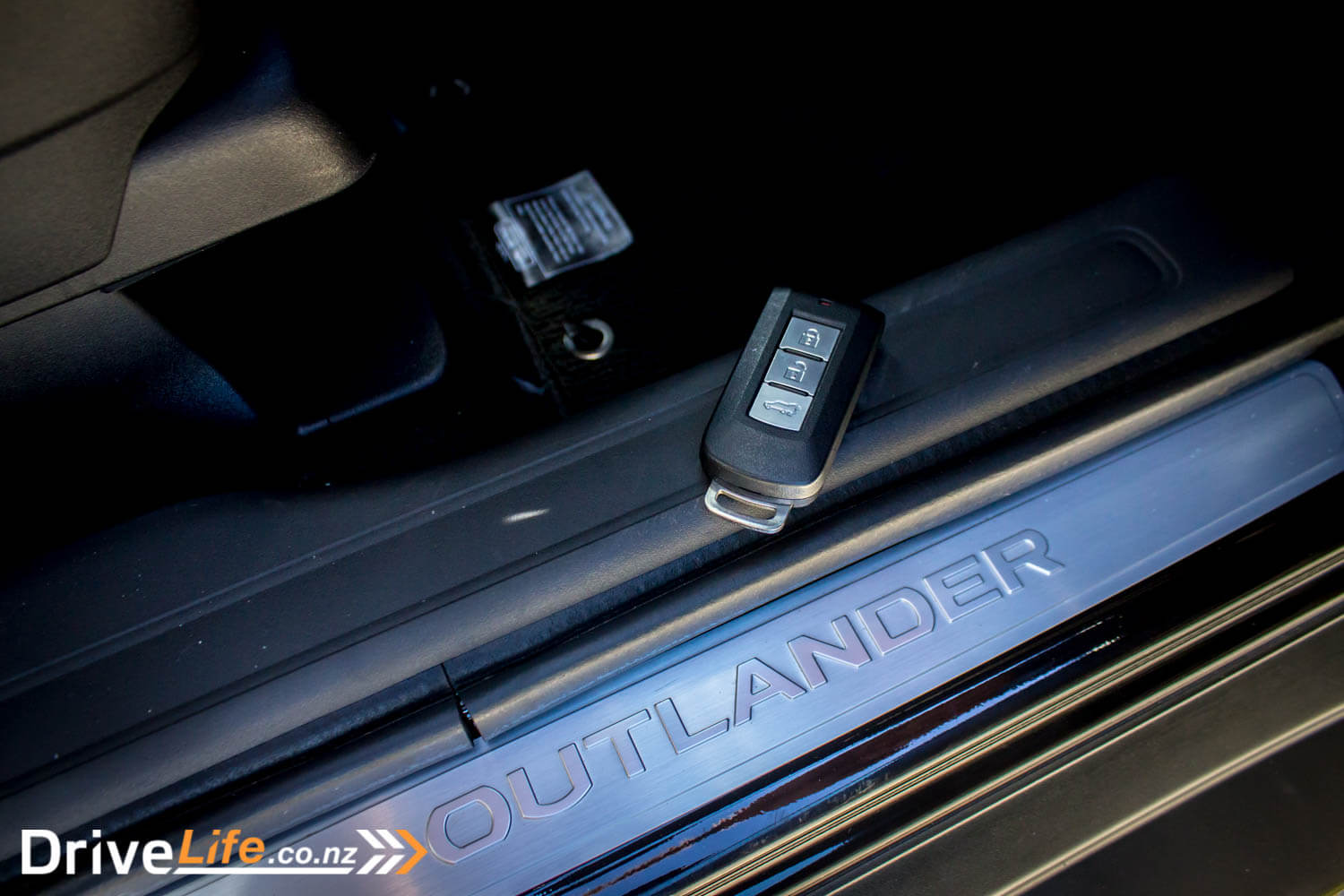
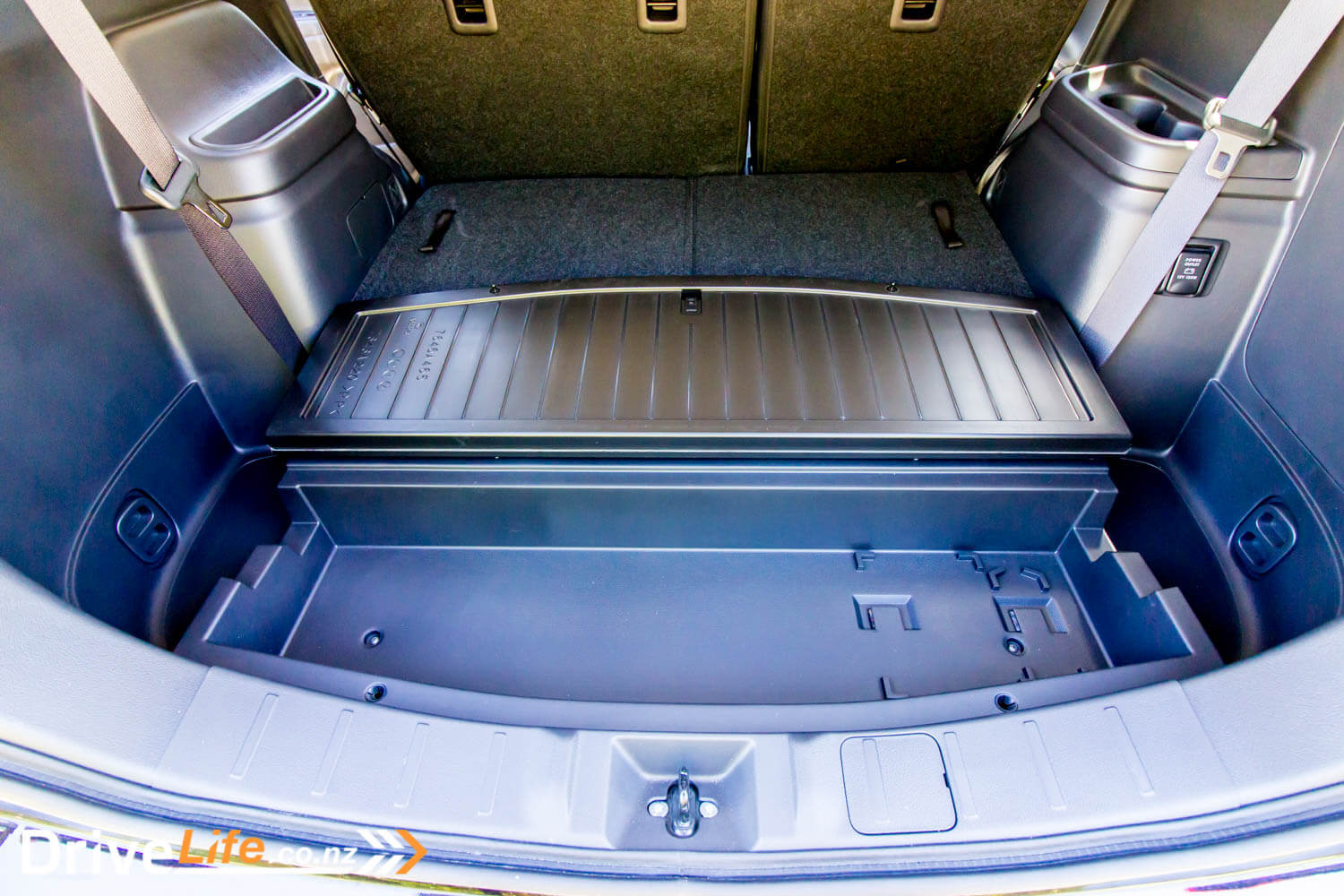
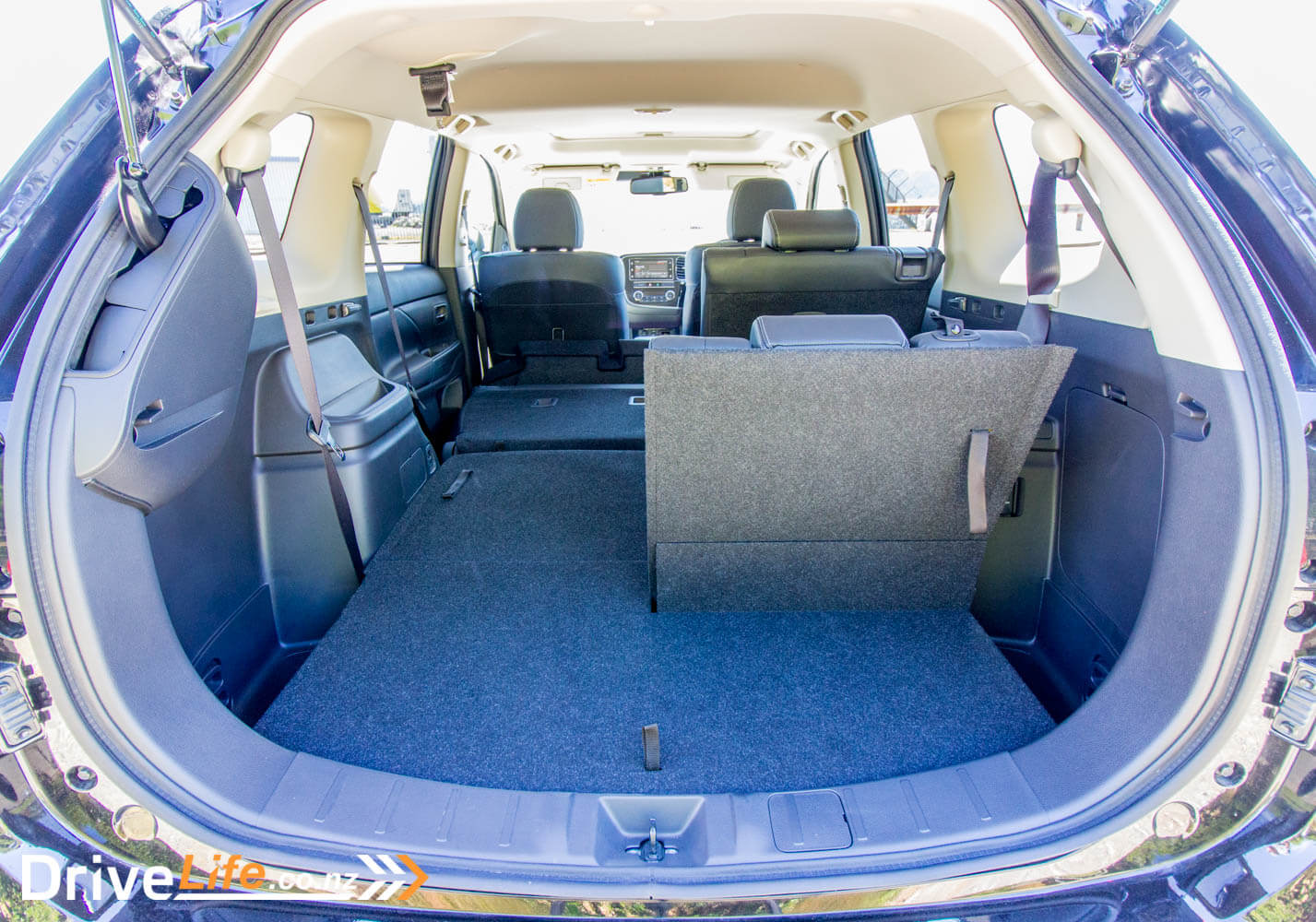

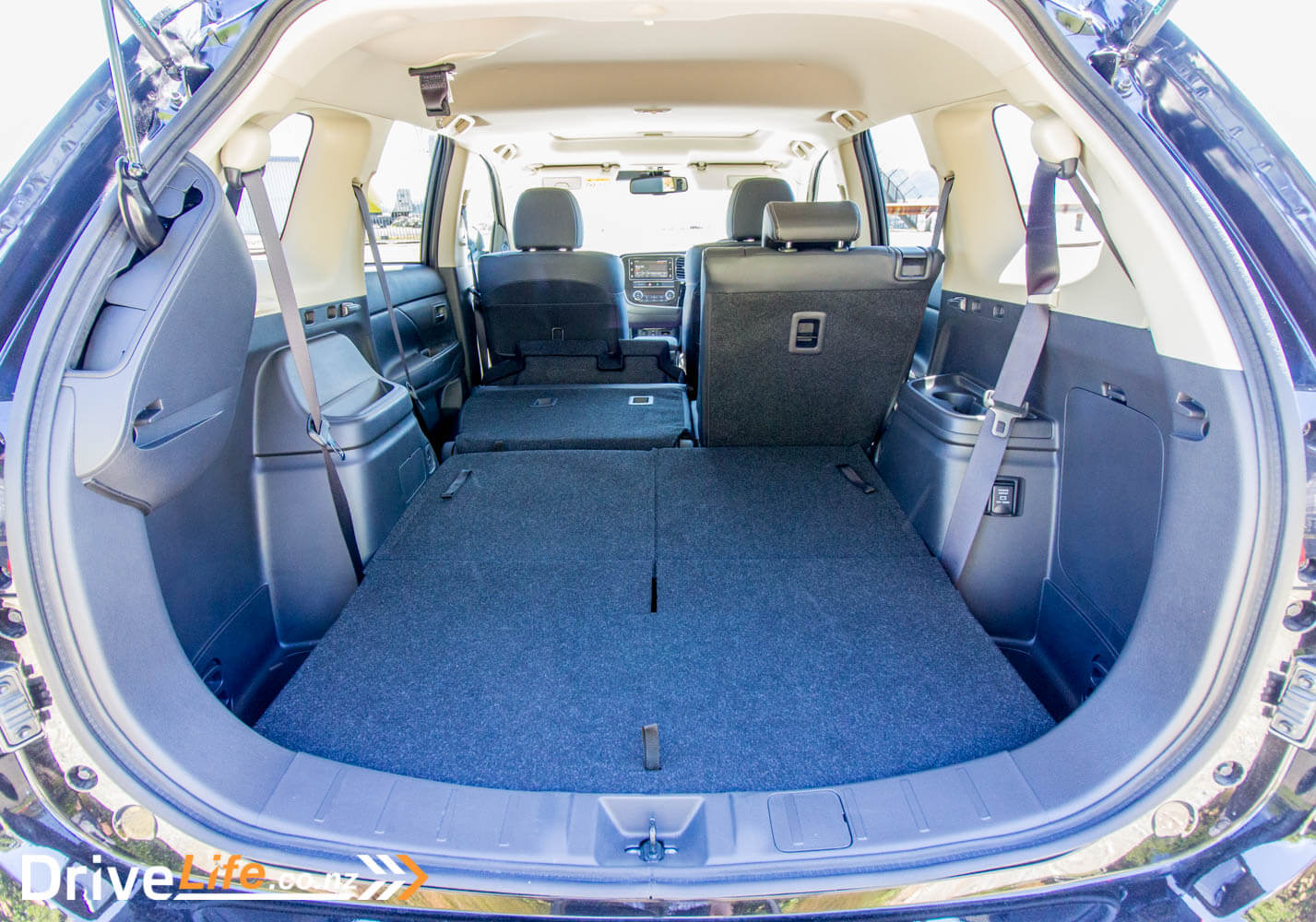
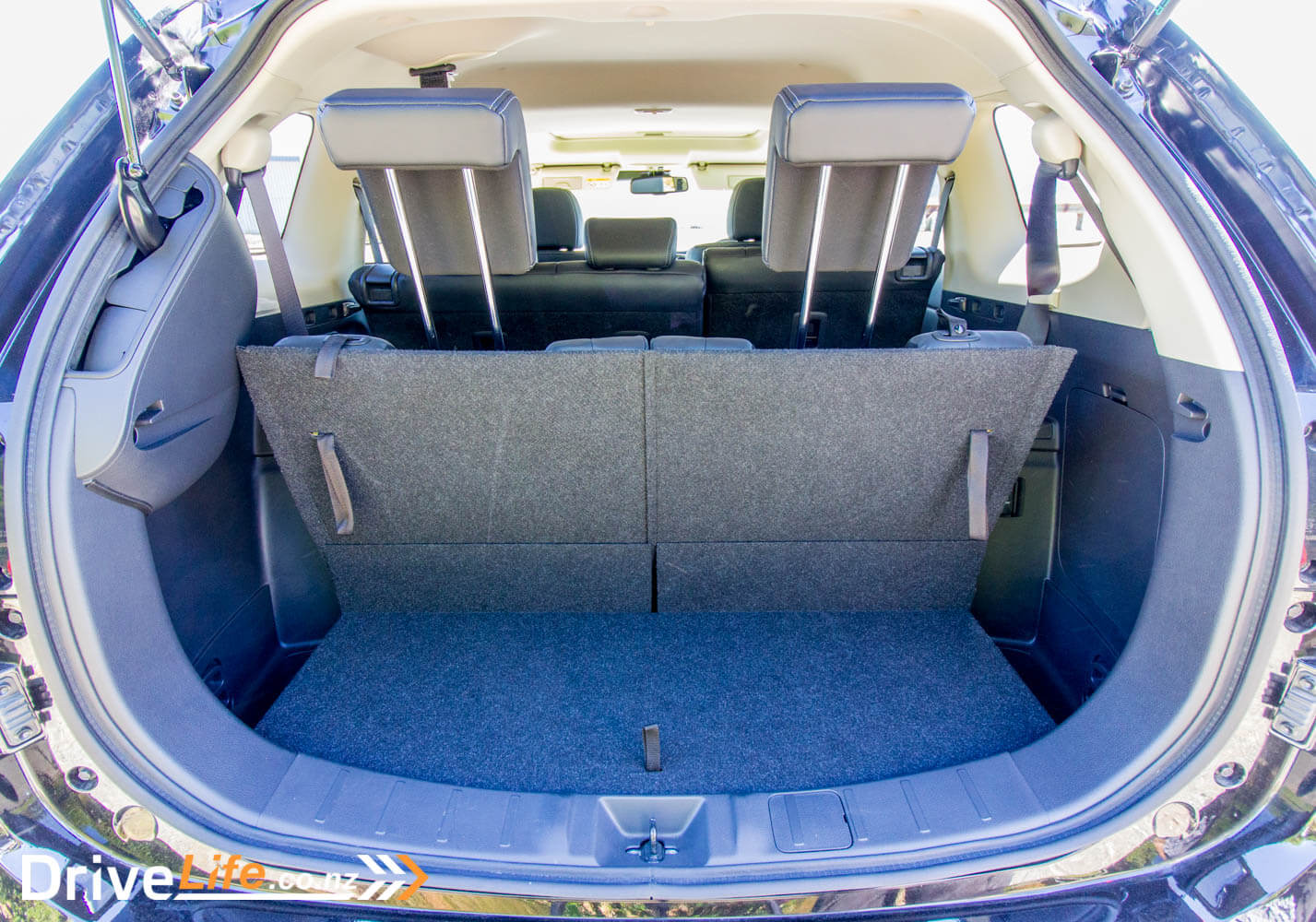
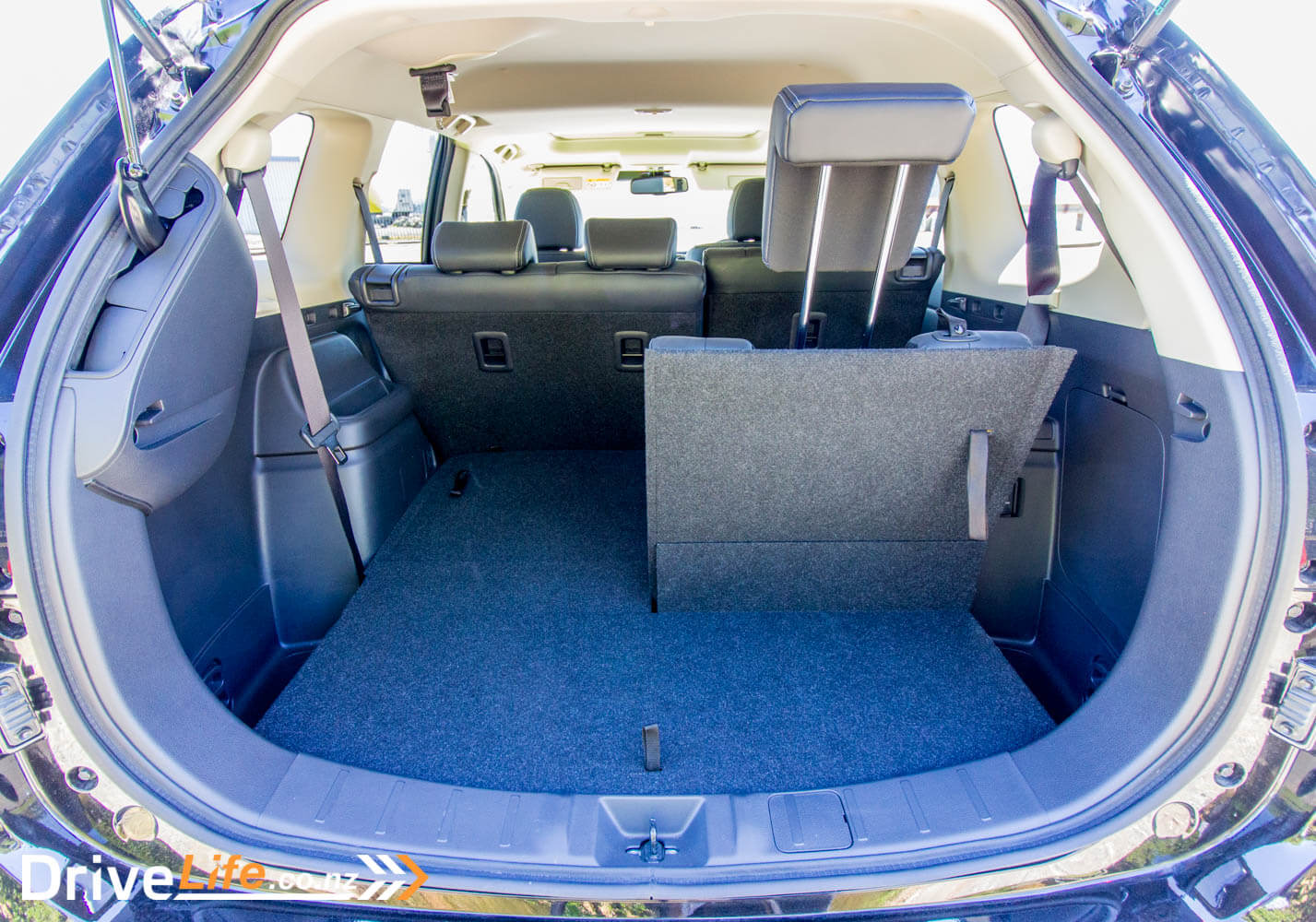
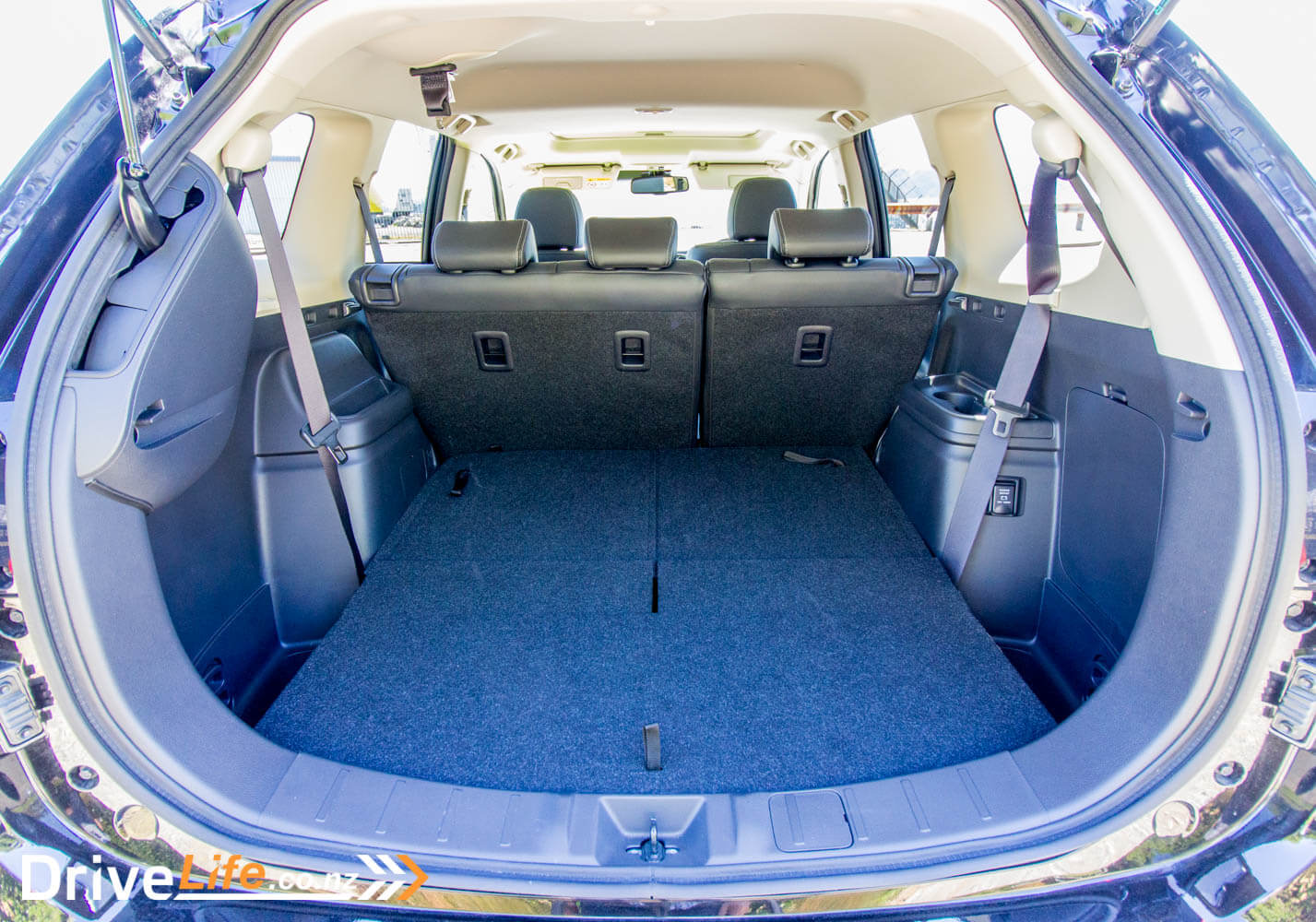

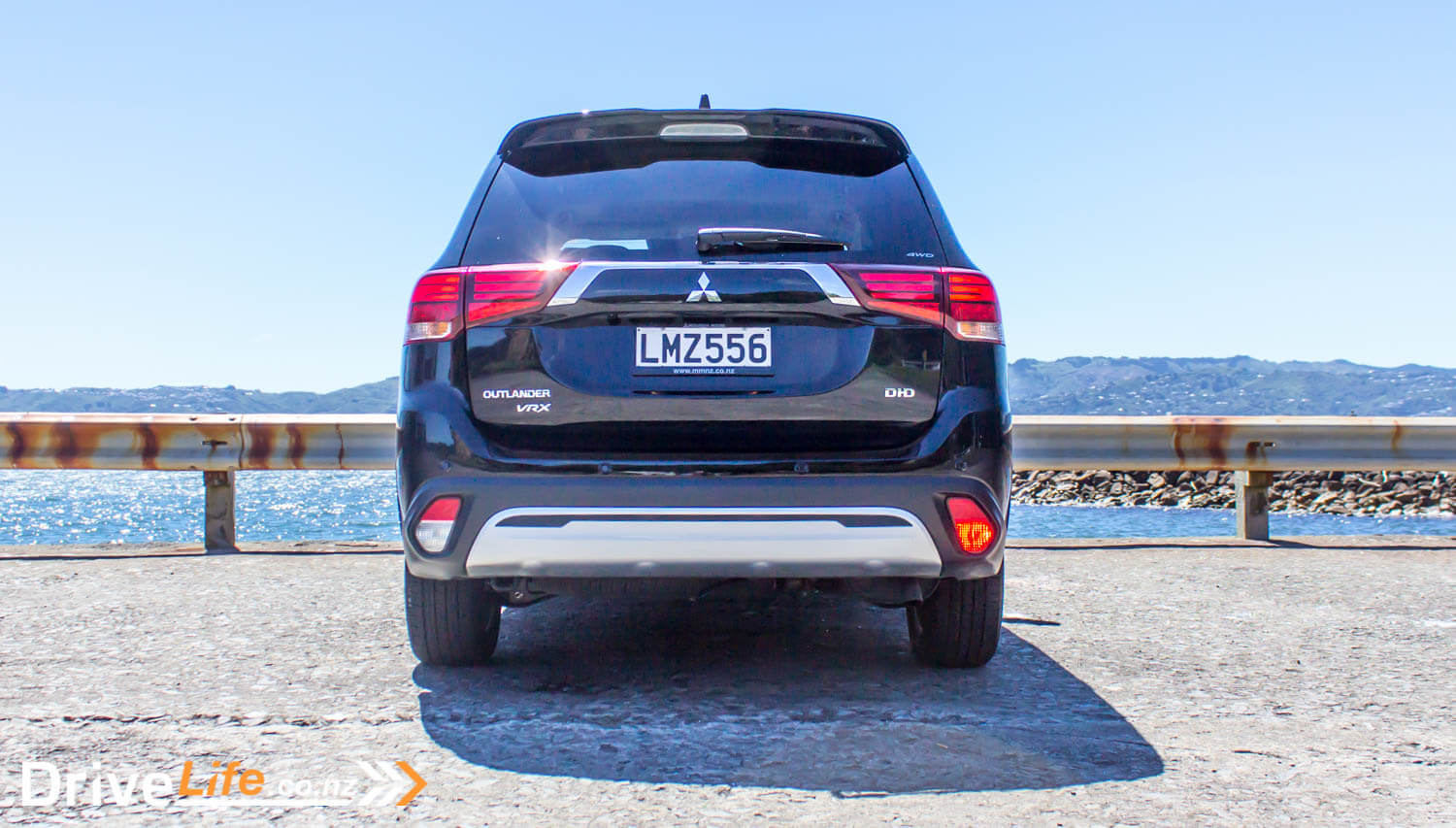
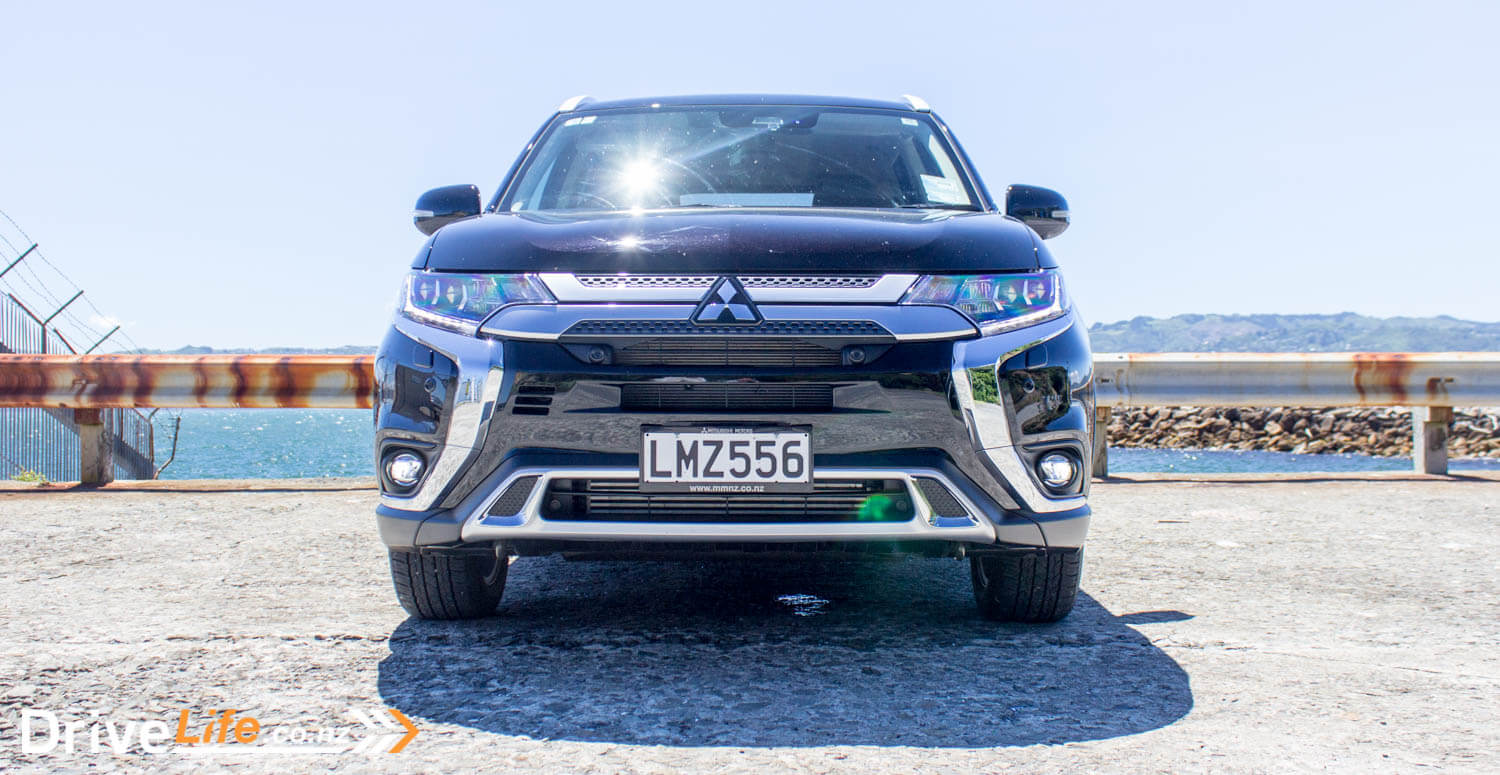
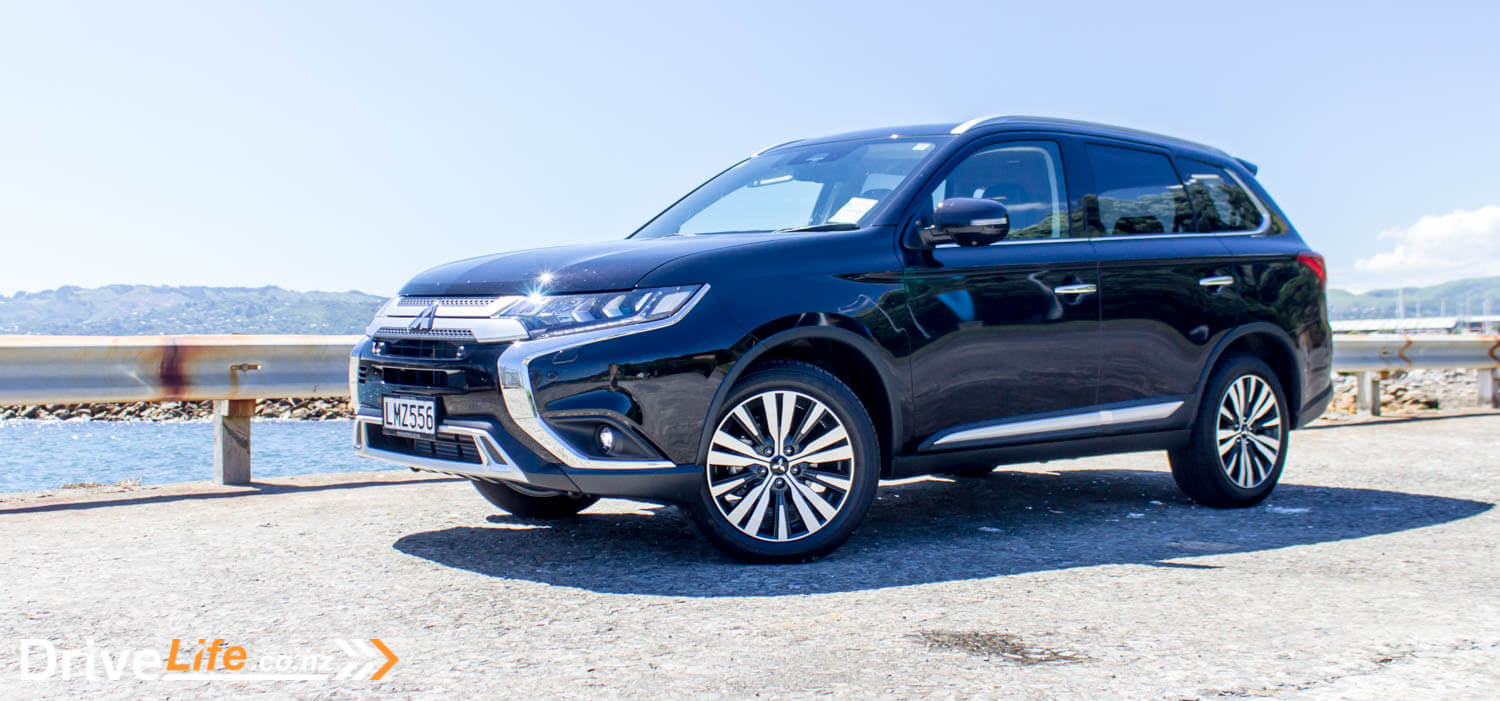


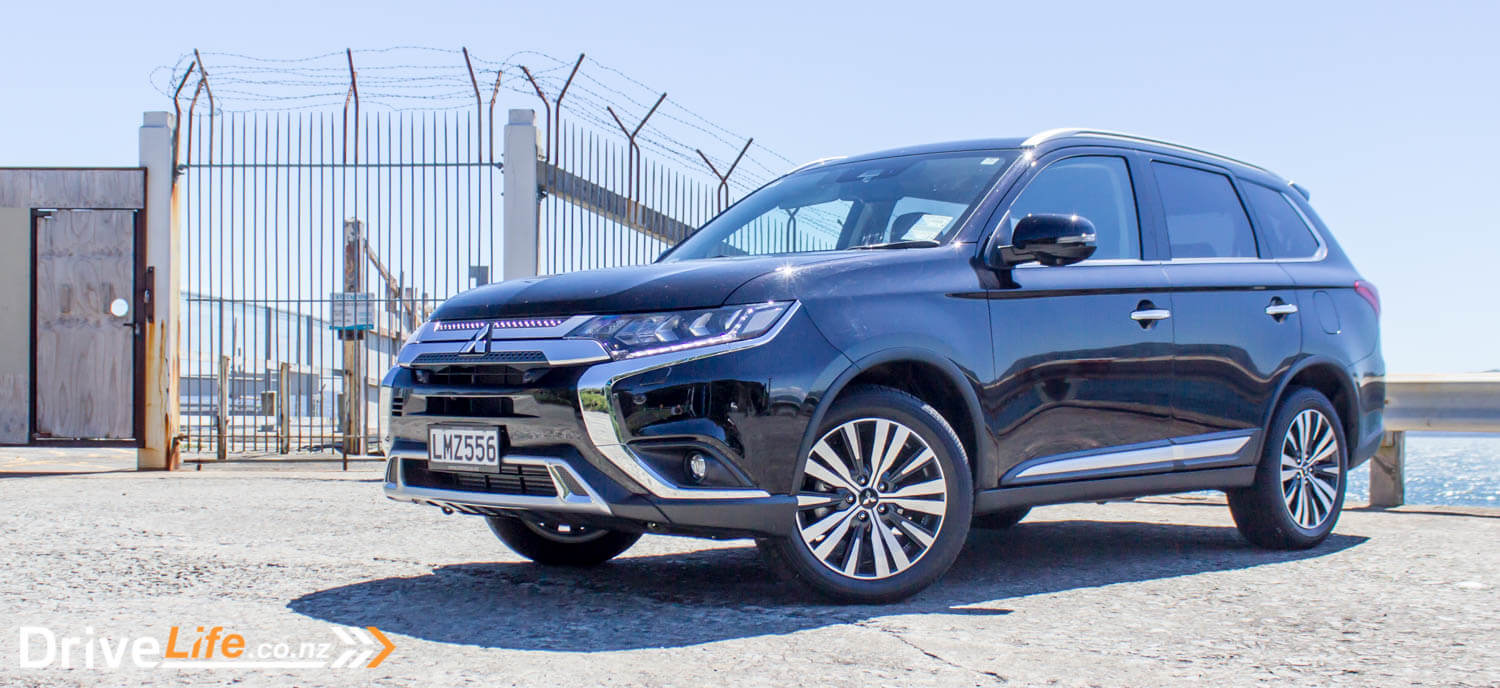






[…] Read more about the Mitsubishi Outlander on http://www.drivelife.co.nz SUV REVIEWS Mitsubishi […]
Great review, thanks. The speakers used for the phone can be programmed left/right or all.
HI Matthew
Thanks for that info – I did go through all the menus, but couldn’t find that option. I’ll check it out next time I get one to drive.
Cheers
Fred